Choosing The Best Wood For Sauna: The Ultimate Guide
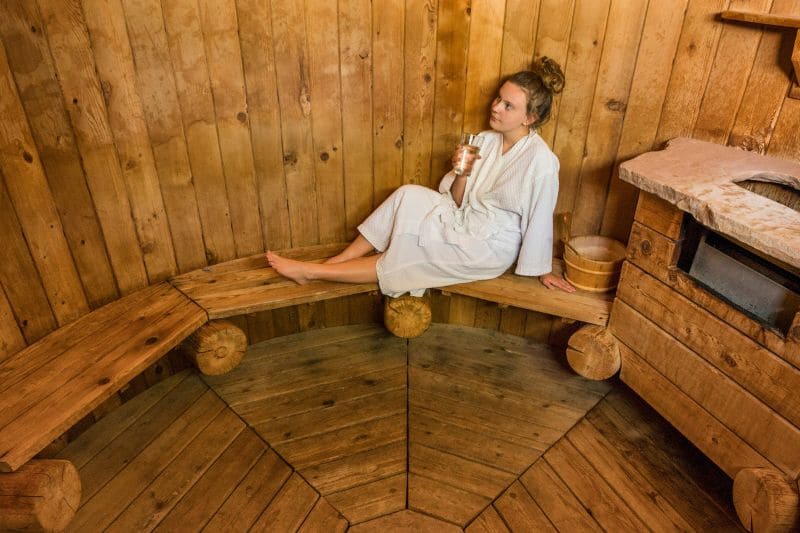
Building the perfect sauna starts with one crucial choice: picking the right lumber. Many think any wood will do, but this decision shapes your sauna’s look, feel, and durability.
Cedar is a top pick for many because of its ability to hold up in high heat and moisture – essential qualities for any good sauna material.
I’ve spent years exploring different materials for saunas, from rustic cabins in the woods to luxury spa retreats. My journey has taught me not just about what wood looks best but which types truly enhance your steam session.
Ready to choose the best wood for your sauna? This guide will clear all your doubts!
Key Takeaways
- Cedar is great for saunas because it smells nice, doesn’t warp, and lasts long.
- Different woods, such as Hemlock, Nordic Spruce, and Eucalyptus, have unique benefits for saunas, such as handling heat well or adding special scents.
- Good wood makes your sauna cozy and keeps the warmth just right without getting too hot.
- Avoid using treated wood in your sauna because the chemicals can be harmful when heated.
- The right wood selection will save you money in the long run by avoiding repairs caused by damage caused by heat or moisture.
Table of Contents
Why Saunas are Made from Wood
Wood is the top pick for building saunas. It has been this way for ages. Wood makes saunas warm and welcoming. It can hold the heat but won’t burn you when you touch it.
- Natural Insulation: Wood keeps heat inside well, making the sauna nice and warm. You can enjoy the sauna fully in its cozy warmth.
- Moisture Regulation: Wood can soak in and let out water. It keeps the sauna at the right humidity. This way, the sauna is never too dry or too wet.
- Aroma: Some woods, like cedar and eucalyptus, smell good. Their smell makes the sauna a more calming place. It boosts relaxation and happiness.
The right wood turns a simple room into a restful retreat.
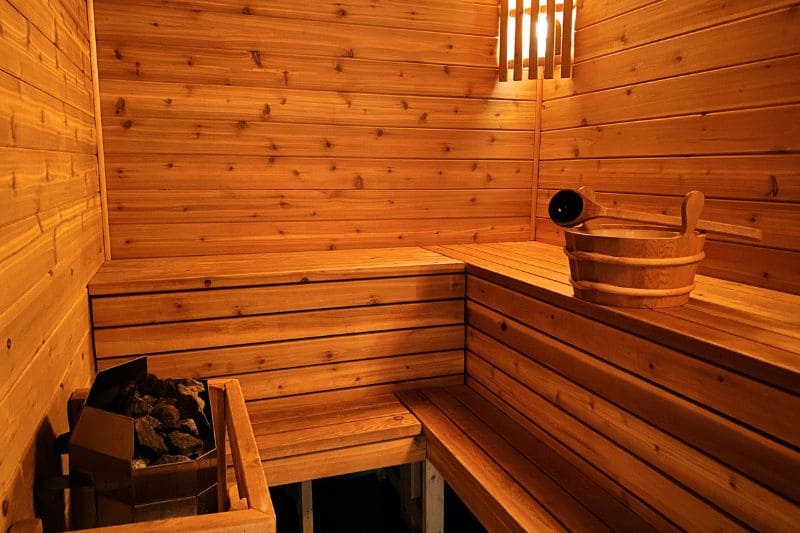
Importance of Choosing the Right Wood for Your Sauna
Picking the right lumber is key to a top-notch sauna.
It’s all about creating that perfect hot room where you can relax without worrying about damage or safety.
I learned this the hard way. Once, I went for a cheaper option and ended up with wood that couldn’t handle the heat—it warped and even cracked! So trust me, your choice in timber matters big time.
The wood’s kind affects the sauna’s life, use, and look. Picking the right wood means having better sauna time for many years.
- The wood choice really matters for the sauna’s toughness. Some woods don’t decay, get bugs, or twist easily. They are made to take the sauna’s hot humidity and last a long time.
- The right wood not only lasts longer but also looks great. Each kind of wood has its own color and design. Each kind of wood brings its own color and design. This makes your sauna pretty and welcoming, making your time there more special.
- The right wood also keeps the sauna warm like it should be. The right wood helps keep the heat in. This means a cozier and more relaxing experience.
- And let’s not forget how some woods affect health differently when heated.
To pick the best wood for your sauna, consider what’s important to you. Consider how long it lasts, how well it keeps heat, how it looks, the cost, and the care needed.
The Best Wood for Sauna with their Pros and Cons
Finding the right wood for your sauna is like picking the perfect ingredient for a master recipe—it makes all the difference. Let’s dive into some top picks, from Cedar to Magnolia, each with its own charm, benefits, and downsides.
Get ready to learn more and make an informed choice for your sauna haven, be it a traditional or an infrared sauna!
1. Western Red Cedar
Cedar is often regarded as the gold standard for saunas. Western Red Cedar is my top pick for sauna wood because of its ability to hold up in high heat and moisture – essential qualities for any good sauna material.
Pros:
- It’s strong and lasts a long time.
- It’s resistant to decay and insects.
- This wood keeps the heat in well, making the sauna use less energy.
- This wood keeps its shape and doesn’t warp or bend with the intense heat and moisture of a sauna.
- People love cedar for their saunas because of its aroma, which adds to the sauna experience.
Cons:
- It costs more than other options.
- Its color may change over time with exposure.
- It may cause allergies or respiratory irritation in some individuals due to its strong aroma.
My friend chose cedar for his outdoor sauna and is happy he did. He told me the natural aroma makes every visit feel like a retreat into nature. Plus, this choice means less worry about wear from weather or heat over time.
For anyone considering building a sauna, I always suggest cedar, with western red cedar being the best variant; it truly enhances the entire experience while proving to be a wise investment in quality and durability.
Back when I built my first sauna, I used Alaskan Yellow Cedar. It’s not the usual choice, but it gave the sauna a unique, bright vibe. The light yellow color and fresh scent were refreshing compared to the typical cedar.
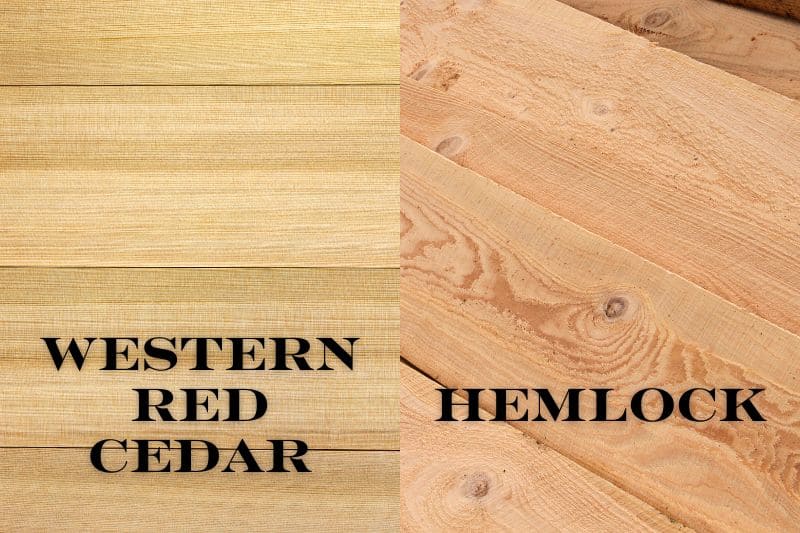
2. Hemlock
Moving from cedar, another great wood for saunas is hemlock.
Pros:
- It’s known for its light color and smooth texture.
- Hemlock doesn’t just look good; it also stands up well in the hot, humid conditions of a sauna.
- If you’re on a tight budget, this wood is a more economical choice than cedar.
- Its non-resinous nature means it won’t give off any strong smells when heated up.
- What’s really cool about hemlock is how it keeps things fresh and clean in saunas. It’s got this natural knack for fighting off decay and nasty bacteria.
Because of these qualities, I chose hemlock for my home sauna, and honestly, I’ve been more than happy with how it’s held up over time.
Cons:
- Hemlock doesn’t resist water and bugs, and neither does cedar.
- It might be prone to splintering and scratching.
- Its resistance to bend or twist when exposed to sunlight is not as good as cedar.
- Some might not find that it looks as good as other woods.
Choosing hemlock for your sauna is like picking the quiet hero – unassuming yet powerful in performance.
3. Nordic Spruce
Nordic Spruce, also known as Norway spruce, comes from cold places of Northern, Central, and Eastern Europe. For saunas in Finland, the most common wood for wall panels, traditionally, has been spruce.
Pros:
- It’s a popular choice for a sauna because it’s strong and smells nice.
- It works well in the heat of a sauna and does not warp easily.
- Its light color makes the sauna look bright and welcoming.
I once visited a friend’s cabin that had a sauna made of Nordic Spruce. The moment I walked in, the light color of the wood caught my eye. It felt warm yet fresh inside, unlike any other sauna I’d been to before. That experience showed me how much wood can change how we feel in a space like that.
Cons:
- It’s not as tough as cedar or hemlock.
- Nordic Spruce can develop sap pockets and may darken over time.
4. Common Aspen
Common Aspen is a great choice for sauna wood.
Pros:
- It’s budget-friendly.
- It does not get too hot to touch, which makes it ideal for the sauna’s interior. That’s why in Finland, aspen is mostly used to make sauna benches.
- This type of wood has a smooth texture and looks light and clean, adding a bright feel to your sauna space.
- Plus, aspen doesn’t give off any smell when heated, perfect for those who prefer their sauna experience without strong aromas.
Cons:
- It’s not as strong as some other woods. So, it needs looking after to stay in good shape.
- It’s softer and prone to dents.
- It needs proper care to avoid mold.
My uncle once used common aspen to upgrade his old sauna. He always talks about how this change made his sauna sessions more enjoyable. The smooth texture of aspen didn’t only enhance the look of his sauna but also improved the overall feel, making it more comfortable against the skin.
For anyone trying to make their sauna cozy and inviting, choosing Common Aspen could be a smart move.
Although common aspen is a great choice for sauna interiors, I tried out Thermo-Aspen for my sauna benches, and it was a game changer. The thermal treatment gave it a sleek, dark finish, making my sauna look sophisticated while staying durable and smooth to the touch.
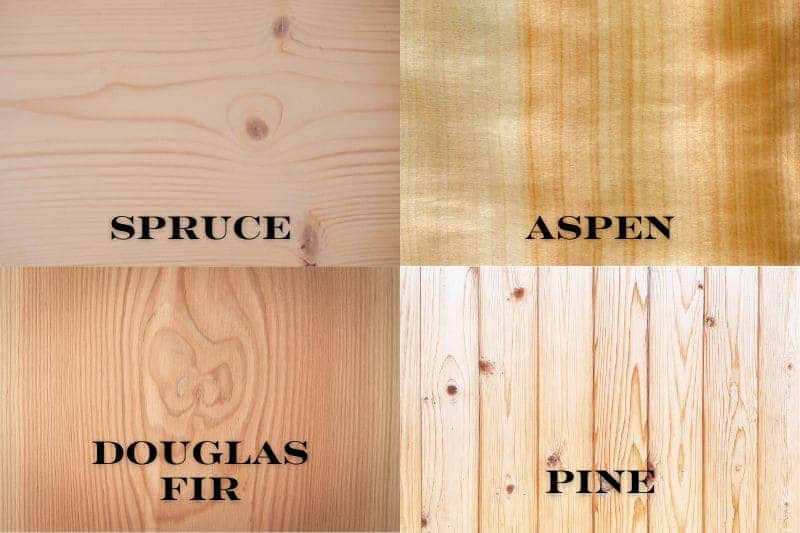
5. Douglas Fir
Moving from Common Aspen, another wood that stands out for sauna use is Douglas Fir.
Pros:
- This type of wood is strong and has a unique look.
- It handles heat well, making it a good option for building saunas.
- From my own experience, I’ve noticed that Douglas Fir gives off a pleasant scent that enhances the entire experience.
- Its grain and color add to the visual appeal of any sauna room, creating a warm and inviting atmosphere.
Cons:
- Douglas Fir can splinter if not treated properly
- It’s harder to shape this wood, so it may be challenging to work with.
- Its cost can change depending on your location and if it’s in stock.
Douglas Fir is a testament to strength and beauty in the heart of your sauna.
6. Pine
Pine is a popular wood for sauna construction.
Pros:
- It’s strong and can handle heat well, making it great for both the inside part where people sit and the outside part, too.
- Pine smells good, which adds to the relaxing feel of being in a sauna.
- The cost? It’s more wallet-friendly than some other woods like cedar.
Cons:
- Pine has many knots that can dry and fall out, especially in infrared saunas.
- It might not last as long as cedar or hemlock. However, thermally treated pine is stronger, denser, and more stable.
Next up, let’s talk about eucalyptus…
7. Eucalyptus
Moving from pine, we have eucalyptus as another great choice for sauna wood.
Pros:
- This wood stands out because it can handle high heat very well.
- It’s also strong and lasts long, making it a great option for both indoor and outdoor saunas.
- People love eucalyptus for its unique smell, too, as it makes their sauna experience even better.
- It’s also durable, naturally insect-resistant, and rot-resistant.
- Eucalyptus has a beautiful look that adds to the charm of any sauna.
- Its smooth finish feels nice to touch, which is important when sitting or lying in your sauna space.
- Eucalyptus is a sustainable choice as it grows quickly all over the world, which is good for the environment.
Cons:
- Eucalyptus doesn’t hold up well against pests.
- It tends to crack with temperature changes and fades over time.
- It also requires regular maintenance.
Choosing eucalyptus brings a cool feeling to your sauna.
Once, instead of eucalyptus, at the last moment, I opted for Paulownia, a lightweight but strong wood for a sauna I built for my cousin. It was unconventional, but it stayed cool to the touch and created a pleasant atmosphere.
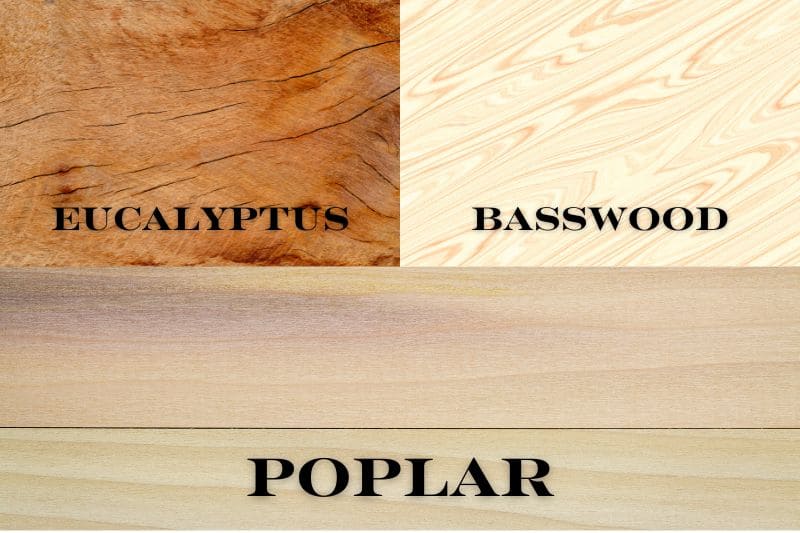
8. Basswood
Many people overlook basswood because it’s not as well-known as cedar or spruce.
Yet, after working on several projects using this material, I advocate for its use both on benches and walls within the sauna.
Pros:
- Basswood is celebrated for its light color and uniform texture, making it a favorite among those who prefer a softer look inside their sauna space.
- It has remarkable resistance to temperature changes, ensuring that your sauna remains comfortable year-round.
- This wood’s hypoallergenic nature makes it an excellent option for everyone. It doesn’t emit strong odors or irritate sensitive skin.
- Its softness allows easy cutting and shaping, which is great for custom sauna designs.
- Unlike harder woods, I’ve found basswood to be incredibly workable without sacrificing durability or quality.
- It maintains warmth efficiently while ensuring that the environment stays pleasant without getting too hot too quickly—a crucial factor during those long steam sessions aiming to relax bones and muscles alike.
Cons:
- Basswood is soft and prone to dents.
- It can be challenging to source.
Basswood is a gentle giant in the world of sauna woods.
9. Poplar
It’s not as common as cedar for saunas but has its own perks.
Pros:
- It’s a cheaper option.
- It doesn’t get too hot to touch. This makes it great for inside sauna walls and benches where comfort is key.
- Poplar is a light, soft kind of wood.
- This wood also holds up well in the moist, steamy air of a sauna without warping or rotting.
- Poplar doesn’t give off sap like some other woods, which can be messy and sticky when heated up.
- Its light color adds a bright look to your sauna space.
My friend has a Poplar wood Sauna, and I often enjoy the warm yet refreshing feel of his sauna room.
Cons:
- It’s not as durable as cedar or hemlock and needs care to avoid damage.
- Being soft, it is prone to scratches.
- It has a plain look and lacks unique grain patterns.
10. Magnolia
It’s not as common, but it brings a fresh twist to traditional sauna woods.
Pros:
- Magnolia has a unique look and smell. It adds an elegant feel to a sauna that you don’t see every day
- Magnolia is hard and keeps its shape well under heat.
Cons:
- It’s less common and not widely used.
- It costs more than other options.
Magnolia proves there’s room to be creative when picking wood for your sauna.
Next up, let’s talk about the various factors you need to consider before choosing your sauna wood.
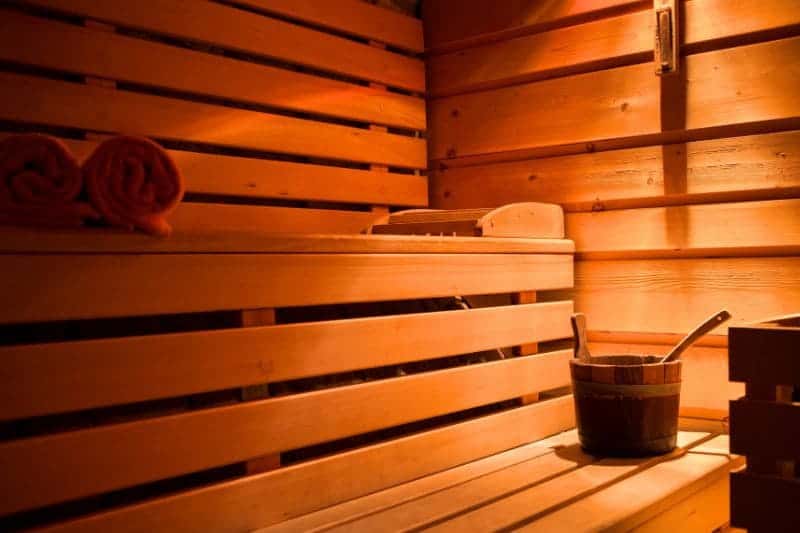
Factors to Consider When Choosing Sauna Wood
Picking the right wood for your sauna can make all the difference. You want something that smells good, looks great, and lasts a long time.
These are a few key things you need to consider:
1. Durability and Stability Insights
Choosing the right wood for your sauna is key. Durability matters a lot because you don’t want wood that wears out fast in heat and humidity.
Some woods can take the heat and moisture of a sauna better than others.
Cedar, for example, is top-notch because it is durable, and it also keeps its shape over time, making it a smart pick for any sauna lover.
On another note, woods like pine or spruce are more budget-friendly but might not last as long in the steamy conditions of a sauna. They can change shape or get damaged quicker than cedar or eucalyptus wood.
So, if you’re planning to build a sauna that stands the test of time without needing lots of repairs, picking a durable and stable wood becomes crucial.
Using Thermally Modified Wood like Thermo-Pine or Thermo-Aspen boosts the wood’s durability. The thermal treatment not only makes the wood more stable but also gives it a rich, dark color.
2. Understanding Resistance to Warping
Heat makes things bend out of shape, but not all woods bow under pressure. A sauna’s wood must keep its cool when things get steamy.
Think back to summer days by the pool with wooden decks that stayed flat and smooth despite the blazing sun. That’s resistance to warping at work – keeping boards from twisting or bowing under extreme conditions.
Woods like Western Red Cedar stand up to heat without changing shape. This quality makes them ideal for saunas, where the air gets very hot and humid.
3. Heat Retention Properties
Heat retention is another big deal. Good sauna wood keeps the warmth just right—not too hot, not too cold—making your sauna sessions cozy and comfortable.
It’s not just about getting hot; it’s about staying warm without using tons of power or taking forever to heat up again if you open the door briefly.
Some woods are better at holding onto heat, making them great for saunas. Once again, cedar is a star here because it holds heat so well. This means your sauna gets warm fast and stays that way.
Each wood type has this special ability to keep or lose heat differently. So picking the right one can really change how your sauna feels and how much energy it uses to stay warm.
If you want something different, you can even try Composite Materials or Engineered Wood. They look like natural wood but are more durable and resist warping; plus, they’re easy to maintain.
4. Aesthetic Appeal and Choices
The look of your sauna matters a lot. You’ll be spending plenty of time in your sauna, so you should love how it looks.
Wood not only affects the heat and feel but also the style of your sauna space. From light, airy feel with aspen to rich, dark tones with cedar, each wood brings its own vibe.
I chose Hemlock for my home sauna because it matched my house’s modern interior perfectly—proof that personal taste plays a big role in selecting wood.
Some woods, like cedar, have a strong smell that adds to the experience. This can make your sauna sessions more relaxing and aromatic, enhancing the overall mood.
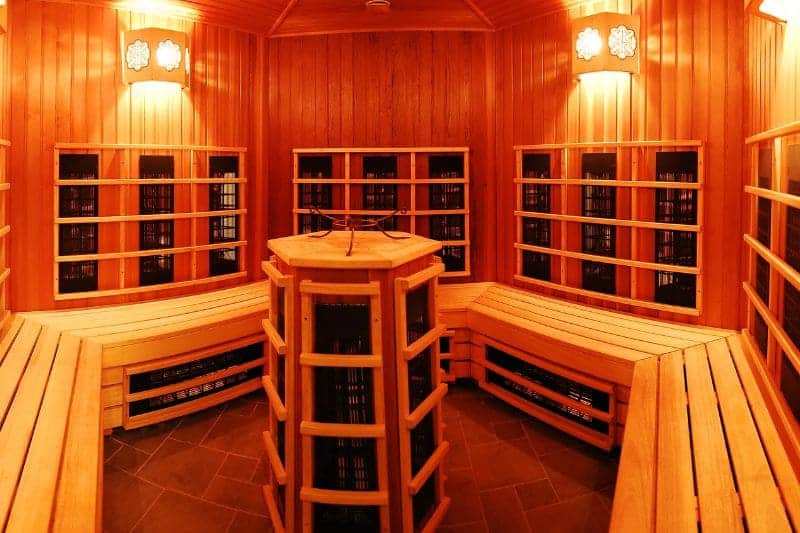
So, think about what you want your sauna to be like. Do you fancy a calm, soothing place or something energizing?
The right wood can make all the difference in creating that special atmosphere you’re looking for in your relaxation corner.
Mixing materials like Cedar, Glass, and Stone can give your sauna a unique style. The cedar keeps the heat in, while the glass and stone add a modern touch.
5. Balancing Budget and Quality
Picking the best wood for your sauna means thinking about money and quality. You want wood that lasts long, smells nice, and holds heat well without breaking the bank.
Good woods like cedar are amazing but can cost more. Affordable woods like pine or spruce might fit tight budgets better. They still work great in saunas but may not have all the perks of pricier options.
Think of this as finding a balance. It’s like choosing between a sturdy pair of shoes that costs more and an okay pair that’s cheaper. Both do the job, yet one might last longer and feel better.
So, weigh your options carefully. Look at what each type of wood offers against how much you’re willing to spend.
6. Maintenance and Upkeep Considerations
When choosing wood for your sauna, it’s important to think about how easy it is to maintain and keep clean. Some woods are naturally resistant to issues like decay, mold, and insects, which means they require less upkeep.
Cedar, for example, is low-maintenance due to its natural resistance to decay and pests. It only needs occasional cleaning and oiling to stay in good condition.
Basswood is similar, with hypoallergenic properties and minimal upkeep requirements.
Hemlock and pine, on the other hand, might need more care. Hemlock can easily scratch or dent, so it needs to be handled gently. It also benefits from regular treatment to prevent damage. Pine can develop sap pockets and is prone to warping, so it’s important to monitor it and apply finishes as needed.
Aspen and poplar are more susceptible to moisture damage, so they need to be kept dry and properly ventilated to prevent mold or mildew. Regular cleaning and drying between uses can help preserve these woods.
It’s worth considering how much work you’re willing to put into keeping your sauna in great shape when selecting the wood type.
Common Mistakes to Avoid When Choosing Wood for a Sauna
Picking the right wood for your sauna is a big deal. You don’t want to mess it up by choosing the wrong type. It’s easy to get trapped if you’re not cautious.
Here are the two most common mistakes to avoid when choosing wood for your sauna:
Why You Should Never Use Treated Wood in a Sauna
You should never use treated wood in a sauna. Treated wood has chemicals to stop bugs and rot. These chemicals can be harmful. In the heat of a sauna, these chemicals can get into the air and onto your skin.
I once made a shelf in my sauna with treated wood. I thought it was smart. But soon, I noticed the air smelled funny when the sauna got hot. It didn’t feel safe or clean anymore.
So, I learned that natural woods are better for saunas because they don’t have those bad chemicals.
Treated woods might seem strong against outdoor weather but they’re not right for the high heat you find in saunas.

Assuming All Wood Types are Suitable for Sauna Use
Just like we need to stay away from treated wood in a sauna, thinking all woods work well is another slip-up.
Not all trees are made the same for sauna heat. Cedar stands out because it handles high temperatures without twisting or turning.
Woods like cedar, and others such as hemlock and spruce, have the right stuff for a steamy room. They don’t easily warp and also keep their shape over time.
On the other hand, using the wrong kind of tree can ruin your sauna adventure. Some wood types might look good but fail when they face the real test – steady heat and moisture. Some might end up bending out of shape, while some may lose their color quickly; that’s not what anyone wants.
Plus, each type of wood adds its own touch to your sauna experience with different smells and feels.
Conclusion
You’ve learned a lot about the different woods that are used to build a sauna and how to choose the best one for your own hot room. We talked about why saunas are made from wood and how different woods, like cedar and spruce, make your sauna better.
This guide showed you what to look for – strong wood that can withstand the heat, doesn’t bend or break easily, looks good, smells nice, fits your budget, and is easy to take care of.
You’ve seen how using quality wood means your sauna will last longer and feel better and how you must avoid mistakes like using treated wood, which can be harmful in the high heat of a sauna.
These tips help make choosing easier and ensure you get a great sauna experience.
So go ahead – create a cozy, inviting space where you can relax and unwind in your beautifully crafted wooden sauna.
FAQs About Best Wood for Sauna
1. What is the best wood to use for a sauna?
The best wood for a sauna depends on your preferences, but popular choices include cedar, hemlock, and Nordic spruce. Cedar is known for its pleasant scent and durability, while hemlock is great for those who want a hypoallergenic option. Nordic spruce is strong and light in color.
2. What is the best material to build a sauna?
Wood is the best material for building a sauna due to its insulation properties and pleasant aesthetics. Cedar, Hemlock, and Aspen are top choices, as they can handle the heat and moisture well while adding to the sauna experience.
3. Can I use fir in a sauna?
Yes, you can use fir in a sauna. It’s strong, has a pleasant scent, and handles heat well. However, it’s important to note that it can splinter if not treated properly.
4. Why are all saunas made of wood?
Saunas are typically made of wood because wood is an excellent insulator, preventing excessive heat loss. Additionally, wood can withstand high temperatures and humidity, creating a comfortable sauna environment that looks aesthetically pleasing.
5. Are wood saunas good for you?
Yes, wood saunas are good for you. They provide a relaxing environment and offer health benefits like improved circulation, stress relief, and detoxification. The natural wood scents can enhance relaxation and improve mood.
6. Why choose cedar over other woods?
Cedar is often chosen for saunas because of its durability, pleasant aroma, and natural resistance to decay and insects. It also has excellent heat retention properties and provides a stable, comfortable environment for a sauna experience.
7. Can I use any wood in my sauna?
Not all wood types are suitable for saunas. It’s best to use wood that can withstand high temperatures and humidity. Popular choices include Cedar, Hemlock, and Aspen, which offer durability, stability, and a comfortable sauna environment.
8. Is there a budget-friendly option for sauna wood?
Yes, Pine and Hemlock are budget-friendly options for sauna wood. Both are affordable and provide good insulation and heat retention, making them suitable for saunas on a budget.

“Become a Sauna Expert Overnight!”
Grab Your “FREE” Sauna E-book NOW!
Get your hands on the ultimate sauna manual. From history to DIY setups, our free guide has it all.

As a Chartered Accountant turned sauna enthusiast, I bring a unique blend of analytical skills and hands-on experience to the world of heat therapy. With over a decade dedicated to researching and testing sauna products and practices, I’ve developed a deep understanding of this field. A the founder of HomeInDepth.com, I provide reliable, easy-to-understand information on all aspects of saunas. My goal is to guide you through every step of your sauna journey, offering meticulously researched, unbiased advice to help you make informed decisions and create your perfect sauna experience. I’m always happy to hear from sauna lovers like you—feel free to leave questions or share your own tips in the comments below so we can learn together. Contact me on:





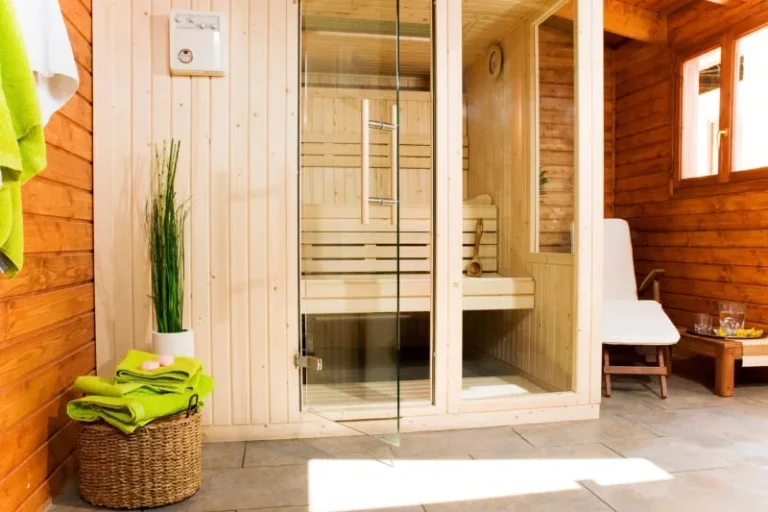
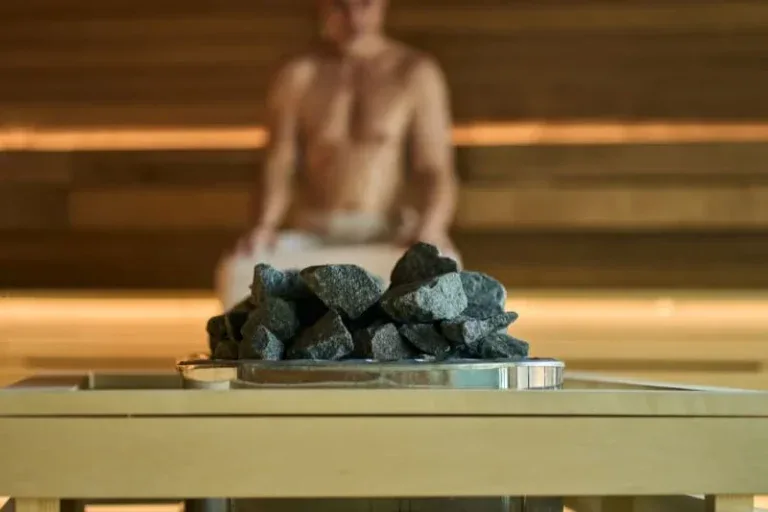
2 Comments